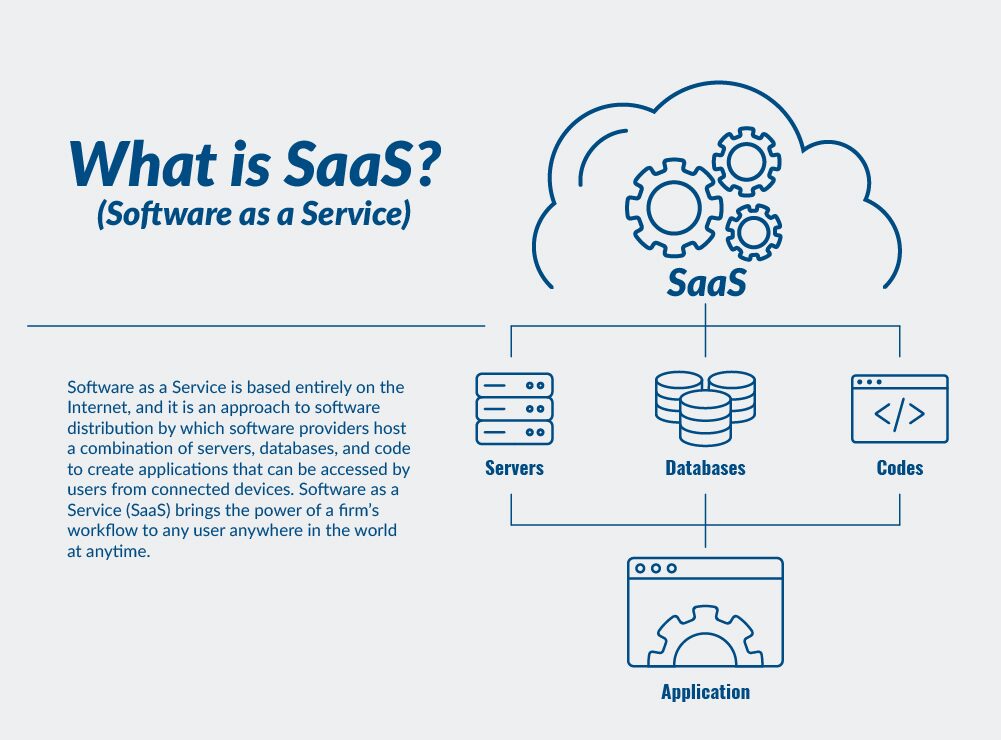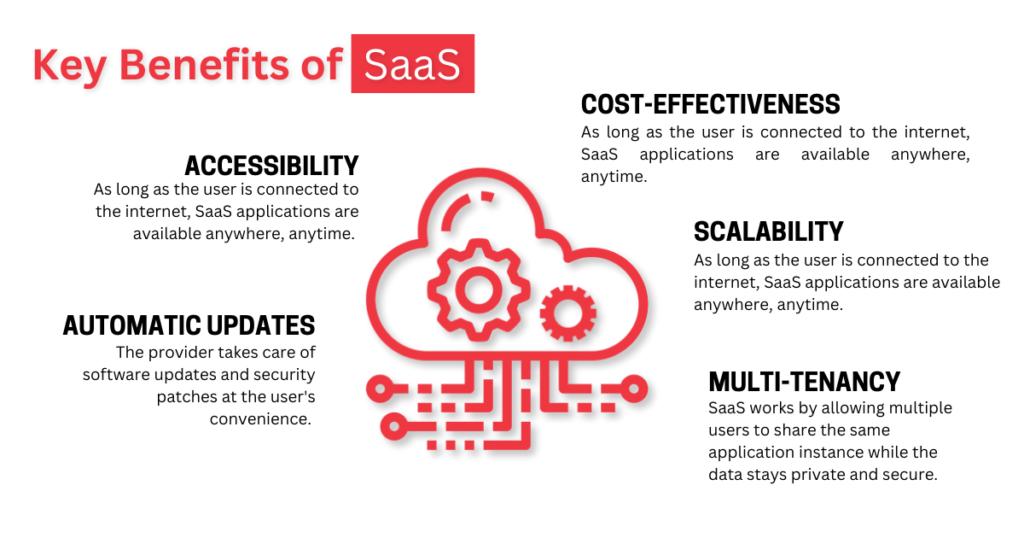In an era defined by digital agility and data-driven decision-making, Software-as-a-Service offers organizations scalable, cloud-based solutions that eliminate the burden of infrastructure management and reduce operational costs. SaaS is a cloud computing model that enables users to pay for access to cloud-hosted software over the internet, rather than purchasing it.
In this blog, we’ll learn about SaaS, how it works, its key benefits, and some of its use cases. Let’s start our learning journey with
What is SaaS
SaaS represents a software distribution model in which applications are hosted by a third-party provider and made available to customers over the internet. Users subscribe to the service instead of buying and installing software on individual computers or servers, and they access it through a web browser or a dedicated client application. SaaS allows businesses to access and use software without needing internal infrastructure or hardware, as the service provider manages all technical aspects, including updates and security.
Consider it like renting an apartment compared to buying a house: you pay for the usage, while the landlord (the provider) handles maintenance and infrastructure.
How SaaS works
SaaS reduces users’ expenses by eliminating the need to purchase software or invest in an extensive on-premises IT infrastructure. By utilizing cloud computing infrastructure, SaaS provides clients with a more streamlined approach to acquiring, using, and paying for software.
SaaS services use multitenant architecture to keep users’ data separate. The SaaS provider manages software updates, bug fixes, and overall application maintenance.
The nature of SaaS makes it easier for providers to roll out new features for their users. Most SaaS applications are plug-and-play products that are ready for immediate use, with the SaaS provider managing all background processes, including:
- Hardware: Like servers, networking, and storage, for data centers.
- Platforms: Including middleware, the operating system, and virtualization.
- Software requirements: Like runtimes, data, and applications.
Key Characteristics That Define SaaS
As organizations shift toward cloud-native solutions, understanding what sets SaaS apart becomes essential. The following key characteristics define SaaS and highlight why it has become the go-to model for delivering software in a flexible, scalable, and cost-efficient manner.
Web-Based Access: Applications are accessible via a web browser, eliminating the need for complicated installations and allowing them to be used on almost any device with internet access.
Subscription-Based Pricing: Users incur a recurring charge, typically on a monthly or annual basis, depending on their usage, the number of users, or the features they use.
Centralized Hosting: The software, along with its data, is stored on the provider’s servers, freeing users from the responsibility of handling infrastructure, updates, and security.
Automatic Updates & Patching: The provider handles all software updates, security patches, and maintenance, ensuring that users always have the latest version without requiring any manual action.
Multi-Tenant Architecture: A single instance of the software serves multiple users or organizations, with each customer’s data kept securely isolated.
Benefits of SaaS
SaaS offers numerous benefits, some key advantages are mentioned below;
Lower Initial Costs: SaaS eliminates the need for initial expenditures on hardware and software licenses. SaaS typically requires little to no initial investment, making it accessible to companies of all sizes.
Reduced Total Cost of Ownership (TCO): SaaS removes expenses associated with software installation, maintenance, upgrades, and IT infrastructure.
Faster Deployment & Implementation: The initial setup of SaaS is typically a quick and straightforward process. No lengthy installation processes – just sign up and start using the app.
Accessibility and Flexibility: With an internet connection, users can access software and data from anywhere and on multiple devices, including desktops, laptops, tablets, and smartphones. This enables remote work and teamwork.
Scalability on Demand: Users can easily personalize their subscription to fit the changing needs of their business, whether they are scaling up or down.
Automatic Updates & Maintenance: SaaS releases the IT team from the time-consuming duties of software maintenance and updating. The service provider handles everything, from updation to maintenance.
Integration Features: Many SaaS applications offer APIs and integrations with other business tools, resulting in a seamless workflow.
Examples of SaaS in Action
SaaS is a dominant cloud computing model with multiple applications across various domains. Some popular examples of SaaS applications that we use daily, both personally and professionally, include;
Customer Relationship Management (CRM): Salesforce and HubSpot CRM are tools that help companies manage customer interactions, track sales pipelines, and automate marketing efforts, all from a unified, cloud-based dashboard.
Email & Collaboration: Email and collaboration tools like Gmail, Microsoft 365, and Slack boost productivity through cloud-based communication, real-time collaboration, and easy file sharing among teams.
Enterprise Resource Planning (ERP): Cloud-based ERP solutions, such as NetSuite, combine essential business operations, including finance, supply chain management, and human resources, within a single platform to enhance efficiency and visibility.
Project management tools: With their user-friendly and customizable interfaces, the SaaS platforms such as Asana simplify task tracking, team coordination, and deadline management.
Content Management Systems (CMS): WordPress and Shopify allow users to create, manage, and expand websites without requiring advanced technical expertise.
SaaS – Empowering the Future of Cloud-Based Business Solutions
Software as a Service (SaaS) has become a fundamental element of digital transformation, fostering operational efficiency & enabling scalability across industries. SaaS continues to reshape the way businesses access, deploy, and manage software. It helps with its flexible subscription models, seamless updates, and reduced infrastructure demands.
As organizations embrace cloud-first strategies, SaaS stands at the forefront. It offers the agility, innovation, and resilience needed to compete in a rapidly changing digital economy.
There is also a new emerging trend of SaaS 2.0, service as a software. Service as a software shifts the focus from providing access to software tools to delivering outcomes as a service. The service as a software (SaS) trends coincides with the AI shift occurring. Service as a software emphasizes AI-driven insights, low-code/no-code flexibility, seamless API integrations, and a personalized user experience. The service as a software is not just about software in the cloud—it’s about smarter, adaptive platforms designed for the digital-first era.
Learn with WeCloudData: Upskill Your Team in Cloud & Data Technologies
Looking to empower your team with the latest in cloud computing, data engineering, and AI technologies? WeCloudData’s Corporate Training programs are tailored to meet the needs of forward-thinking companies. With hands-on, expert-led instruction, our courses help bridge the skills gap and help your organization thrive in today’s data-driven economy.
Upskill with WeCloudData: Become a Cloud Engineer & Analytics Leader
Our Cloud Engineer Track delivers a comprehensive, hands-on approach to cloud engineering. Our Cloud computing training equips you with the skills to design, deploy, and manage secure multi-cloud environments. The courses included in the cloud computing learning track include;
- Python Fundamentals
- Introduction to Linux
- Introduction to Docker
- AWS Fundamentals
- Azure Fundamentals
- GCP Fundamentals
Why This Program?
- End-to-End Cloud Mastery: From core principles to advanced architectures across AWS, Azure, and GCP.
- Enterprise-Grade Skills: Learn industry best practices for DevOps, resilience, and cost-optimized solutions.
- Real-World Readiness: Apply knowledge through hands-on projects and case studies mirroring modern IT challenges.




